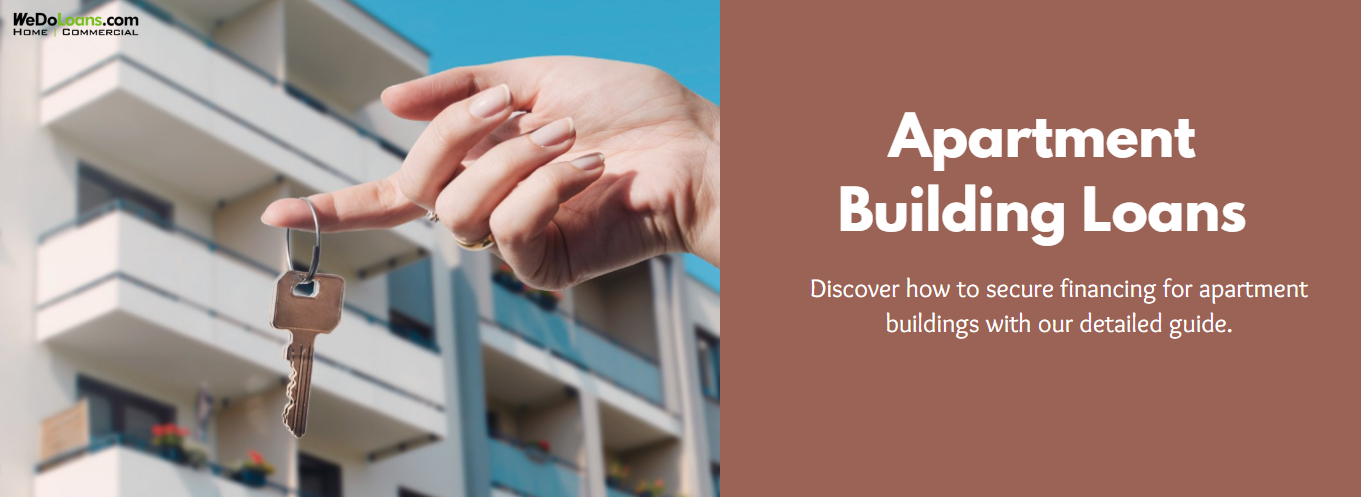
Multifamily residential real estate can offer substantial and reliable returns, but these properties are rarely purchased outright with cash. Instead, they are typically financed through various apartment building loans. Here’s a guide to securing and using these loans effectively.
What Are Apartment Building Loans?
Apartment building loans are specialized financing products designed for the purchase, renovation, or refinancing of multifamily residential properties, typically with five or more units.
The size of an apartment building loan varies based on the property’s cost and the borrower’s qualifications, ranging from $100,000 to several million dollars.
Benefits of Investing in Apartment Buildings
Compared to other real estate investments, apartment buildings offer unique advantages:
- Consistent Income: With multiple units, rental income is diversified, reducing the impact of any one tenant’s non-payment.
- Resilient Sector: Residential properties are more resilient to economic fluctuations than commercial properties.
- Asset Appreciation: Properties in growing areas can appreciate faster than average.
- Loan Programs: Some properties qualify for special loan programs with benefits like lower rates.
Different Types of Loans for Apartment Buildings
Several loan programs are available, each with specific eligibility criteria:
- HUD/FHA Loans: For properties that provide low-income housing. These offer high loan-to-value ratios, long terms, and competitive rates.
- Freddie Mac/Fannie Mae Loans: Widely used for their competitive rates and terms.
- CMBS Loans: Suitable for larger complexes that don’t meet HUD/FHA criteria.
- Bank Loans: More flexible but without the benefits of government-backed loans.
- Short-Term Loans: Higher interest rates but less strict prepayment penalties, suitable for flipping or refinancing.
Eligibility Criteria and Qualifications
Lenders evaluate loan applications based on:
- Credit Score: Minimum scores typically range from 600 to 640.
- Experience: Real estate investment experience can be crucial.
- Property: Location, size, condition, and occupancy rate.
- Financial Projections: Net operating income and other financial metrics.
Application Process for Apartment Building Loans
The application process includes:
- Pre-Approval: Submit an initial application with financial and property details.
- Property Evaluation: Lenders assess the property’s value and potential.
- Underwriting: Detailed review of the application and supporting documents.
- Disbursement: Funds are released upon approval and closing.
Documents to Prepare
When applying, you’ll need:
- Personal and business financial statements
- Tax returns
- Rent roll
- Property appraisals and inspections
- Credit report
Down Payment Requirements
Most lenders require a down payment of 20-25%, with some government programs allowing as little as 15%.
Approval Process Duration
Approval times vary:
- Bank and CMBS Loans: Typically 30-45 days.
- Government-Backed Loans: 60-180 days, depending on the program’s requirements.
Tips to Improve Your Chances of Approval
- Gain Experience: Partner with experienced investors.
- Maintain Accurate Records: Ensure financial documents are current and detailed.
- Larger Down Payment: Increases lender confidence.
- Select the Right Property: Choose well-maintained properties in prime locations.
Conclusion
Investing in apartment buildings can yield substantial returns, and securing the right loan is crucial. Use this guide to navigate the loan options and application process, and you’ll be well on your way to owning a profitable multifamily property.
